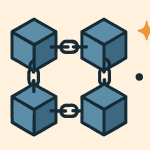If you’re new to decentralized finance (DeFi), you may hear the term impermanent loss. It sounds confusing, but it’s something every liquidity provider should understand.
This article will explain what impermanent loss is, how it happens, and how you can protect yourself — using simple language for beginners.
Contents
What Is Impermanent Loss?
Impermanent loss happens when you provide tokens to a liquidity pool, and the price of those tokens changes over time.
When the prices change a lot (compared to when you added them), you might end up with less money than if you had simply held the tokens in your wallet.
It’s called “impermanent” because the loss only becomes permanent if you withdraw your tokens while the price is different. If the price returns to where it started, the loss disappears.
Example: Understanding Impermanent Loss
Let’s say you add:
-
1 ETH (worth $1,000)
-
and 1,000 USDT (worth $1,000)
-
to a liquidity pool like ETH/USDT on Uniswap
You’ve added $2,000 total.
Later, the price of ETH goes up to $2,000. People start trading ETH for USDT, so the pool adjusts the balance.
When you withdraw, you now get:
-
Less ETH
-
More USDT
You may still have around $2,800 in total, but if you had just held your 1 ETH and 1,000 USDT, you would have $3,000.
That $200 difference is your impermanent loss.
Why Does This Happen?
Liquidity pools work using a formula (like x * y = k) to keep balance between the two tokens.
When prices shift, the pool automatically changes the amount of each token to match the market. This results in you holding a different amount than you started with.
If the price moves a lot, the difference grows — and that’s where impermanent loss comes from.
When Is the Loss Permanent?
The loss becomes permanent only when you:
-
Withdraw your liquidity while prices are different from when you entered.
If the token prices return to their original levels, the loss disappears.
So, if you’re patient and the market stabilizes, you might not lose anything at all.
How to Reduce Impermanent Loss
Here are some tips to reduce your risk:
✅ 1. Choose Low-Volatility Pairs
Pairs like stablecoins (e.g., USDC/DAI) have very small price movements, so less impermanent loss.
✅ 2. Use Liquidity Pools with Rewards
Some pools offer extra rewards or yield farming that can offset the loss and still make you a profit.
✅ 3. Avoid Highly Volatile Tokens
If the tokens are likely to change price a lot (like small altcoins), impermanent loss can be high.
✅ 4. Monitor the Pool
Keep an eye on token prices. If the price change is large, consider withdrawing earlier.
Should You Worry About Impermanent Loss?
It depends on your strategy.
-
If you’re in it for short-term gains, it may be risky.
-
If you’re earning high rewards, they can sometimes outweigh the loss.
-
If you’re providing liquidity to stable pairs, your risk is much lower.
Think of it as a trade-off: you earn rewards but take on some price risk.
Key Terms to Know
| Term | Meaning |
|---|---|
| Liquidity Pool | A smart contract that holds two tokens for users to trade |
| LP (Liquidity Provider) | A person who adds tokens to a liquidity pool to earn rewards |
| Yield Farming | Earning extra rewards by staking LP tokens or farming pools |
| Volatility | How much a token’s price changes in a short period |
Final Thoughts
Impermanent loss is a common part of providing liquidity in DeFi. While it may sound scary, understanding how it works can help you make smarter decisions.
You don’t have to avoid DeFi completely — just choose stable pairs, watch the markets, and consider the rewards versus the risks.
With the right strategy, you can reduce impermanent loss and still benefit from passive income in DeFi.




